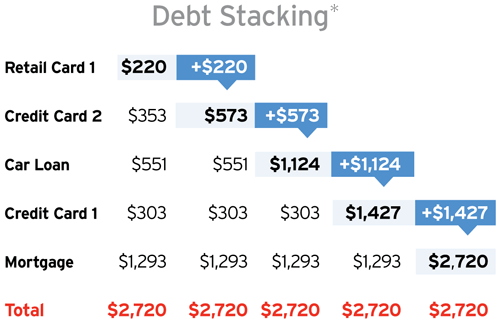Times are tough, but you don’t have to let your debt mark you forever. If you’re among the 79% of undergrads who have credit cards, you’re part of a group carrying record-high credit balances. The average balance grew to $3,173 and 21% have balances of between $3,000 to $7,000. And this isn’t even including the more than $25,000 amassed in student debt!1 Is this really the way you pictured starting your life?
Proud and in Debt
According to researchers at Ohio State University, young adults feel empowered by their credit card and education debts. Seriously?! You feel empowered? “The more credit card and college loan debt 18- to 27-year-olds had, the more they felt like they were in control of their lives. Ironically, this is the generation that is expected to deal with an increasingly growing 14 trillion dollar national debt.”2
Don’t let your debt scar you. Get out now and stay out of debt. That’s the only way to really get ahead and make the most of all of your hard-earned cash. Here are some tips to help you avoid digging yourself into debt:
- Add it up. It might make you a little queasy, but you’re better off knowing where you stand. Get all of your bills together and do the math.
- Less cards = more control. Did you know that half of college undergrads had 4 or more credit cards?3 It’s time to get rid of that card you opened for a free T-shirt on the first day of class and keep it manageable. Have you heard of debt stacking? It’s a great way to gear down your debt. Take a look:

- Check your credit. Did you know you can get your credit report for free once a year? Visit AnnualCreditReport.com (877-322-8228). You might have a “don’t ask, don’t tell” policy on your debt balance but your credit score is the number one thing banks, creditors — and future employers — look at, so you’d better know what’s up.
- Develop a budget. Ugh. The B-word. Budgets are boring, right? Maybe, but for some, this can be a major wake-up call. If you seem to run short at the end of the month and can’t figure out where the money goes, this is a great way to discover less than stellar trends in your spending habits.
- Learn from your mistakes. “Nearly one in five 18- to 24-year-olds is in ‘debt hardship,’”4 so even if you’re in over your head right now, you can make a couple of strategic changes and get back in the black. As soon as you learn from your mistakes, you can start taking a step in the right direction … and that’s money in that bank!
- CreditCards.com, viewed on October 11, 2011, Money.MSN.com, November 8, 2011
- LifeInc.Today.com, June 9, 2011
- CreditCards.com, viewed on October 11, 2011
- Ibid
* The examples are for illustrative purposes only. The Debt Stacking concept assumes that: (1) you make consistent payments on all of your debts, (2) when you pay off the first debt in your plan, you add the payment you were making toward that debt to your existing payment on the next debt in your plan (therefore you make the same total monthly payment each month toward your debts) (3) you continue this process until you have eliminated all of the debts in your plan. In the example above, when the retail card is paid off, the $220 is applied to credit card 2, accelerating its payment to $573. After credit card 2 is paid off, the $573 is applied to the car loan for a total payment of $1,124. The process is then continued until all debts are paid off. Note that the total payment per month remains constant.
Related
1 Comment
Comments are closed.



Yes! Finally something about get empowered.